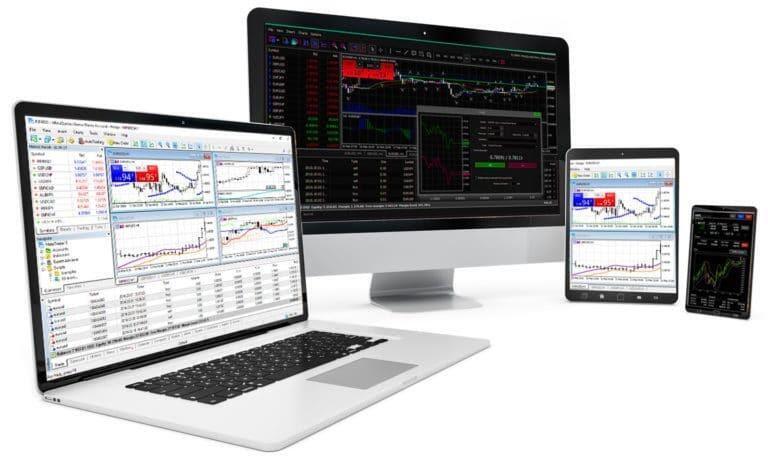Profit Margin vs Markup: Learn the Difference

Cost of goods sold is the allocation of expenses required to produce the good or service for sale. Gross profit can also be a misnomer, especially when consider the profitability of service sector companies. In this example, the law office’s gross profit is equal to its revenue. However, the rent expense of the company office is twice as high as monthly rent. Gross profit may indicate a company is performing exceptionally well, but be mindful of the “below the line” costs when analyzing gross profit.
Best Buy Reports Second Quarter Results – Business Wire
Best Buy Reports Second Quarter Results.
Posted: Tue, 29 Aug 2023 11:00:00 GMT [source]
The basic difference between the gross profit as well as net profit is the deduction of taxes and other deductions. For ease of computation, the gross profit method is a quick solution for determining COGS and ending inventory for interim reporting. Since interim reports are usually for internal use, it is acceptable to use this method. We can then calculate estimated ending inventory by applying estimated COGS to actual purchases and beginning inventory.
Short-Term Usage Period
It can impact a company’s bottom line and means there are areas that can be improved. Analysts use a company’s gross profit margin to compare its business model with that of its competitors. If you’re interested in calculating business profits, it’s best to use margin over markup.

However, it is still an acceptable method when making interim reports for internal use. Moreover, retailers with inventory stored in multiple locations will benefit from the retail method in determining ending inventory. For a detailed discussion of this method, read our article on retail accounting. It includes a free calculator for figuring your estimated ending inventory at cost. Gross profit helps you record the costs required to produce revenue.
Small business owners can avoid frequent inventory counts and save time by using the gross profit method to estimate inventory. The gross profit method is the easiest inventory estimation technique wherein the company uses historical gross profit rates to determine cost of goods sold (COGS) and estimate ending inventory. By assuming a constant gross profit margin, you can convert actual sales to estimated COGS, which can then be used to estimate ending inventory. Very simply, a company’s normal gross profit rate (i.e., gross profit as a percentage of sales) would be used to estimate the amount of gross profit and cost of sales. Sales for the year, prior to the date of the fire were $1,000,000, and Tiki usually sells goods at a 40% gross profit rate.
Gross profit vs. gross margin
This figure is then divided by the total revenue during that period. Standardized income statements prepared by financial data services may give slightly different gross profits. These statements conveniently display gross profits as a separate line item, but they are only available for public companies. Because these are two different calculations, they have entirely different purposes for gauging how a company is doing. Gross profit is useful to determine how well a company is managing its production, labor costs, raw material sourcing, and spoilage due to manufacturing.
- If the current situation yields a different percentage (as may be caused by a special sale at reduced prices), then the gross profit percentage used in the calculation will be incorrect.
- Net profit margin is a key financial metric that also points to a company’s financial health.
- The gross profit method is a way of calculating the amount of ending inventory in a reporting period.
- The COGS includes all costs that are directly related to creating and selling the product or service.
- Gross profit is typically used to calculate a company’s gross profit margin, which shows your gross profit as a percentage of total sales.
- Such inventory is usually high-value items, such as jewelry, consumer appliances, and luxury apparel.
The gross profit formula helps you identify cost-saving opportunities on a per-product basis. Now it’s important to note that sales revenue differs from your company’s profits. To find your sales revenue, either look at your financial statements or calculate all of your earnings for the term you’re looking at. The formula for the gross margin is the company’s gross profit divided by the revenue in the matching period. Conceptually, the gross income metric thereby reflects the profits available to meet fixed costs and other non-operating expenses.
Gross Profit
Then, the estimated cost of ending inventory is found by multiplying the retail value of ending inventory by the cost‐to‐retail ratio. Next, the cost‐to‐retail ratio is calculated by dividing the cost of goods available for sale by the retail value of goods available for sale. You could also have a highly profitable product (high GPM) but lose money (low NPM).

Just as with material costs, labor costs are a function of the hourly rate paid and the number of hours worked. Jane’s Clothing, Inc. needs to get an inventory estimate to its banker immediately to finalize some loan documents for the upcoming season. The banker doesn’t care whether or not Jane does an inventory count, so Jane uses the is goodwill considered a form of capital asset. Unlike software and related services — which represent sources of recurring revenue — hardware products are one-time purchases. On the income statement, the gross profit line item appears under the cost of goods (COGS) line, which comes right after revenue (i.e. the “top line”). By comparison, net profit, or net income, is the profit that is left after all expenses and costs have been removed from revenue.
Gross Profit Method
Be proactive and make improvements sooner rather than later to take charge of your business’s financial health. Your business results will improve, and your firm will increase in value. It can be limiting, however, since it only takes into account the profitability of the company and not additional relevant data, such as rising material costs or labor shortages. A better indicator of a company’s overall financial health may be that of net profit.
In general, gross profit helps a company analyze how it is performing without including administrative or operating costs. To find the gross profit, you need to understand what https://online-accounting.net/ revenue and cost of goods sold are. The calculation for cost of goods sold includes the expenses directly related to producing your products or services (e.g., raw materials).
Companies sometimes need to determine the value of inventory when a physical count is impossible or impractical. For example, a company may need to know how much inventory was destroyed in a fire. Companies using the perpetual system simply report the inventory account balance in such situations, but companies using the periodic system must estimate the value of inventory. Two ways of estimating inventory levels are the gross profit method and the retail inventory method. The gross profit method is a way of calculating the amount of ending inventory in a reporting period.
- These statements conveniently display gross profits as a separate line item, but they are only available for public companies.
- This calculation is applicable if the company – like Madison’s jewelry shop – is a retailer that simply trades in buying and reselling merchandise.
- As an investor, you’ll need to look at some key financial metrics so you can make well-informed decisions about the companies you add to your portfolio.
- Instead of dealing with gross profit, markup is calculated to show you how much your product price is or needs to be marked up from its cost to earn the profit desired.
- However, if a customer contract requires you to hire an outside firm to assess quality control, that one-time cost may be considered a fixed direct cost.
A regular physical inventory count is only feasible if the inventory can be counted easily. Such inventory is usually high-value items, such as jewelry, consumer appliances, and luxury apparel. But if you hold large quantities of inventory, a physical count is inefficient, and using either the retail or gross profit method is highly recommended. The retail method is an estimation technique, just like the gross profit method.
The gross margin is the percentage of a company’s revenue remaining after subtracting COGS (e.g. direct materials, direct labor). Indirect costs such as operating expenses and non-core expenses do not affect gross profit. Operating profit is calculated by subtracting operating expenses from gross profit. The gross profit percentage is a key component of the calculation, but the percentage is based on a company’s historical experience. If the current situation yields a different percentage (as may be caused by a special sale at reduced prices), then the gross profit percentage used in the calculation will be incorrect.


